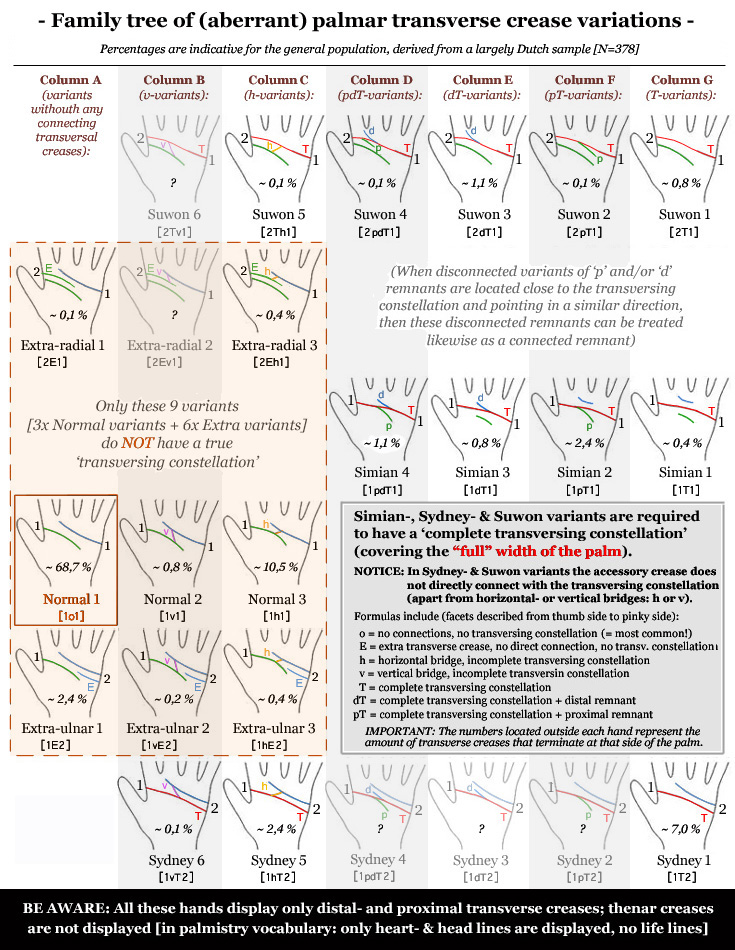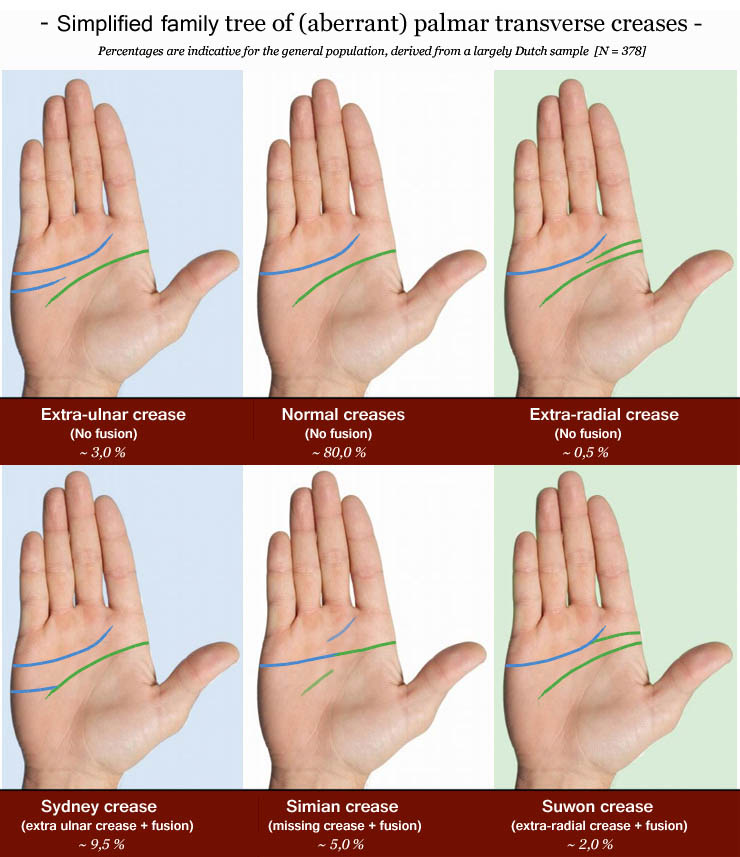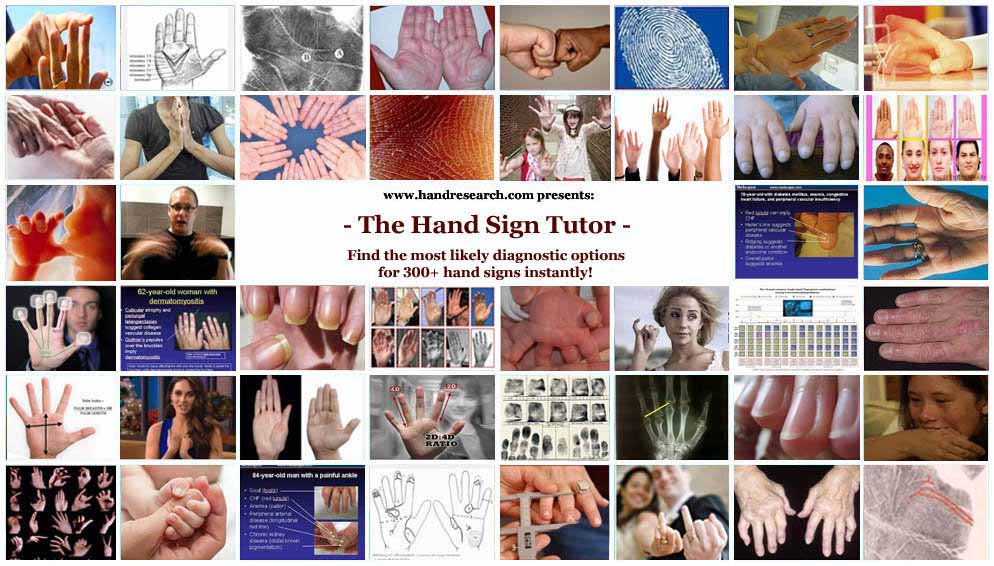The concept of the Suwon crease was introduced in 2010 by researchers from Korea; curiously, in a population of 2,095 males and 1,121 females the Suwon crease was reported to be present in the hands of some of the Korean males (0,7%) but not in any of the females (0,0%). Unfortunately, the report presents only a rather general core-concept for the Suwon crease (not featured with any sort of subvariants).
An early attempt was been made to determine the prevalence of the Suwon crease in a population from Central India, but unfortunately the report (Sharma & Sharma, 2011) was featured with an invalid concept for the Suwon crease (described as 'accessory III'), which is very different from the concept presented by the Korean researchers (who defined the Suwon crease in terms of 'accessory II'). The issue regarding the study from India was also implicit reported in a study from Nigeria (Alhaji et al, 2015) - which e.g. reported a relatively high prevalence of Suwon creases in left-handedness. But the complexity of the concept of the Suwon crease also becomes visible in another study from Nigeria (Nwolim et al, 2016), featured with a visual example for the Suwon crease that does not even come close to the concept presented by the researchers from Korea.
In 2017 an innovate family tree of aberrant palmar transverse creases was presented, featuring various Suwon crease sub-variants. However, according this Dutch model the Suwon crease can be understood to have a higher prevalence than suggested by the Korean publication - though estimates for the general population suggest that the prevalence of the Suwon crease (2,5%) remains typically smaller than the simian crease (4,5%) and Sydney crease (9,0%).
Various experimental studies in 21 Dutch sub-populations have indicated that the nature of the Suwon crease appears to be very different compared to the simian and Sydney line; e.g. a relatively high prevalence was found in Bachelor students (N=39: 5,1%), Agreeableness low scorers (N=43: 4,6%) & Conscientiousness high scorers (N=58: 4,3%).
A thorough assessment suggest that the Suwon crease correlates with above average intelligence/high IQ.
|

The Suwon crease defined by detail:
The Suwon crease can be recognized via the presence of a complex formation involving the transverse creases featured with a distal remnant in the upper transverse crease, combined with the presence of 2 transverse crease terminations at (or very close to) the radial side of the palm + 1 transverse crease termination at the ulnar side of the palm (see the central example in bottom row above).
TIP: Many more details on the major hand lines
available here, including a more detailed family tree
(the SIC model) involving the major palmar creases):
The 3 primary hand lines (9 sections)
Finally, a high prevalence of lines which remind of the Suwon crease - so-called 'Suwon remnants' (which can be understood to represent a phenomenon that is sort of between Suwon creases and a extra-radial creases) - has been observed in Agreeableness high scorers. Curiously, this finding may appear to be inconsistent with the finding of a relatively high prevalence of Suwon creases in Agreeableness low scorers; however, the prevalence of 'Suwon remnants' was reported to have an extraordinay high prevalence (24,2%), close to 10x higher than the estimate prevalence of Suwon creases in the general population (2,5%) and almost 5x higher than the highest prevalence among the 21 Dutch sub-populations.
|


